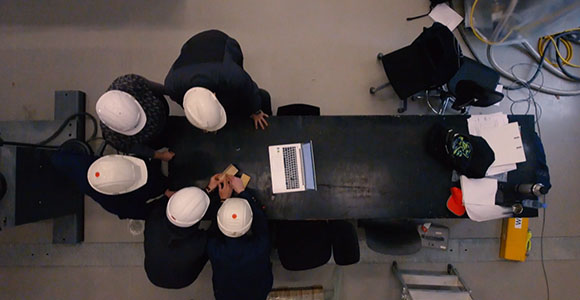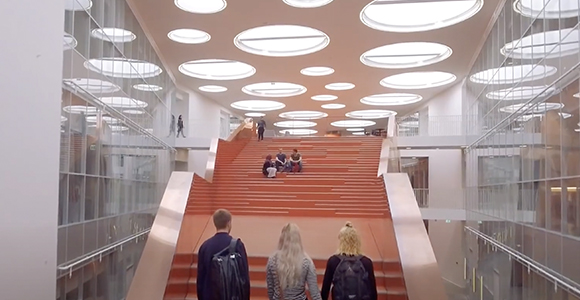Find the answer to why and how technology works
During your studies you will find the answer to why and how technology works – and you will use that knowledge to develop, for example, optically based faster computers or new optical measurement methods for diagnosing cancer, or ultra-sensitive sensors capable of detecting the presence of just a few molecules of narcotics or explosives.
Since the invention of the laser some fifty years ago, optics and especially nanotechnology have undergone a rapid development and become significant parts of physics, technology and industry as well as of our everyday lives. Just imagine that without the laser, things such as the DVD-player would not have existed and you would not have been able to print on a laser printer.
With a master programme in Physics and Technology you will acquire specialist skills in a broad area, primarily linked to the design and fabrication of nanostructured functional materials as well as the characteristics of light and its interaction with atoms, molecules and matter. Applications that exploit these aspects are the primary focus of this academic profile.
Science of light and color
Optics is not about glasses and contact lenses; it is about the science of light and color. The programme includes theories on how to produce light in for example lasers, the scattering of light in different matters, and theories of how light interacts and exchanges energy with the matter. Laser light interacting with a nanostructured noble metal is confined to the metal surface; something which will enable you to use nanometre thin gold wires to guide light.
You build on your already strong foundation in physics, technology and mathematics. This provides you with a deeper knowledge of especially advanced optics, quantum physics, material physics and molecule physics, nanophysics and the fabrication of nanostructures. These subjects enable you to work interdisciplinary in this rapidly changing high-tech world with challenges in academic frontier areas.
In addition, you will acquire expertise in measuring and analyzing signals – with special focus on, for example, highly sensitive sensors combined with intelligent data analysis.
In your master thesis project you can work in one of the university's exciting research areas related to the academic profile.
This could for example be nanooptics, where you utilize the fact that light can be intensified millions of times when it interacts with tiny gold particles. By optimizing this process it is possible to create highly sensitive single-molecule sensors which can detect, for example, pesticides on the surface of vegetables or fruits. Get an overview of the Programme structure.
Project-based and research-based study environment
You become part of a project based and problem based study environment where you work in project groups. You and your fellow students are responsible for planning and carrying out the project – and for meeting the deadlines. Usually we receive the project outlines from companies and we emphasise that the problems you solve are ‘real world’ problems.
Learn more from the students themselves.
Versatile career paths
With a degree in Physics and Technology you will have a range of job opportunities – in Denmark and abroad. Among other things, you could work in high-tech companies or at universities as a researcher or developer in areas of e.g. optical design and systems, nanotechnology, sensor technology, aerospace engineering, material engineering, and computer modelling of systems.
It is also possible to continue on a three-year research programme, which will lead to a PhD degree. Another option is to participate in an industrial PhD programme, which is carried out in a close collaboration between the university and a company where you are employed.
Graduates who have completed this master programme are entitled to use the title of Master of Science (MSc) in Engineering (Physics and Technology).




